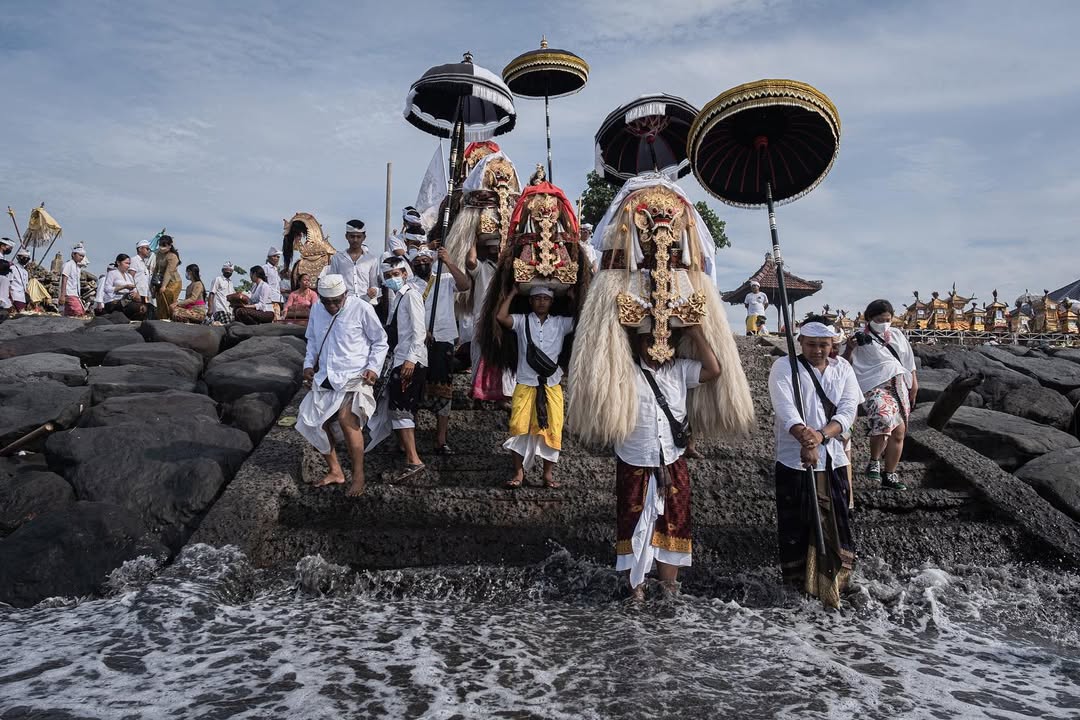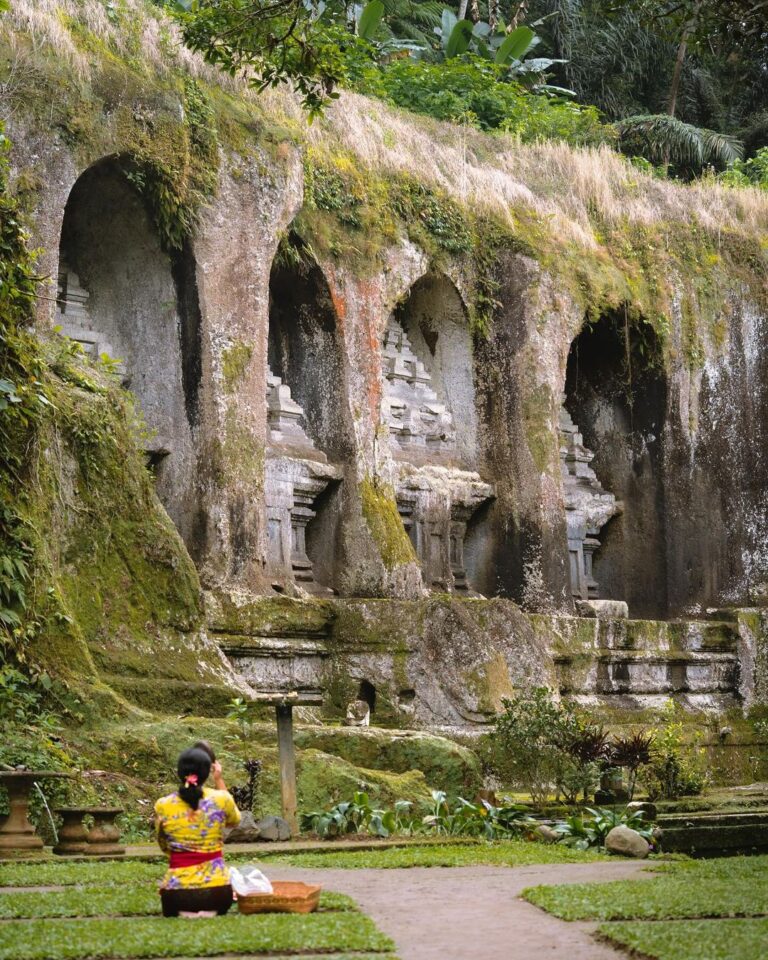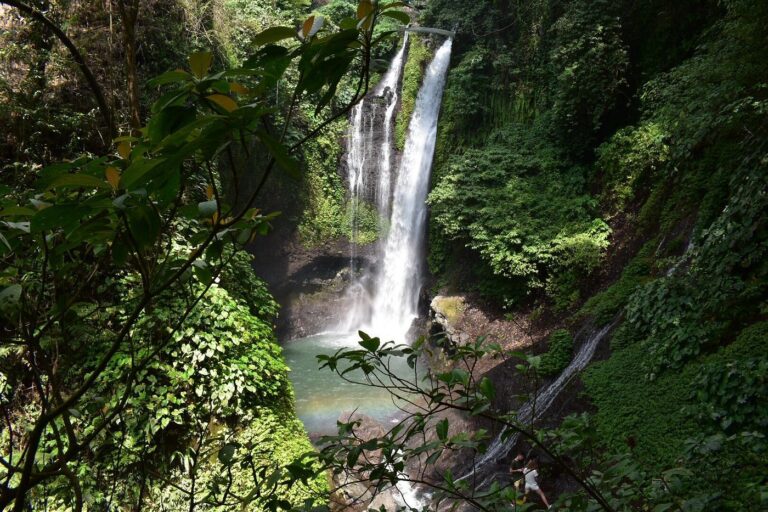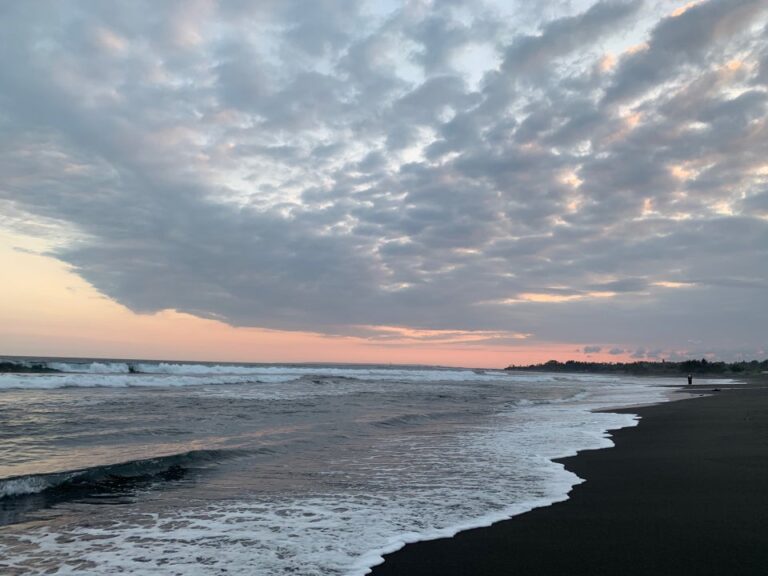If you visit Bali just before Nyepi, you might catch one of the island’s most moving traditions: Melasti.
It’s a powerful ritual that brings entire villages to the sea, where people gather in waves just like the tide—carrying offerings, sacred heirlooms, and centuries of belief with them.
At first glance, it might look like a colorful festival. But at its core, Melasti is about cleansing—of the self, of the spirit, and of the village.
It’s how the Balinese prepare for Nyepi, the Balinese Day of Silence, which marks the start of the new Saka year in the Balinese calendar.

(Photo by : Agung Parameswara)
What Is Melasti, Exactly?
Melasti (sometimes also called Melis) is a large-scale purification ritual held a few days before Nyepi. It’s practiced by Balinese Hindus across the island and is considered one of the most sacred religious events of the year.
During this ceremony, temple artifacts like pratima (sacred statues of gods), pralingga, barong, and other holy symbols are taken from the village temples (pura desa or pura puseh) and carried to the nearest sea, lake, or river.
The purpose is to purify these objects—physically and spiritually—by bathing them in natural water sources.
But it’s not just the objects that need cleaning. The entire community comes along, because Melasti is also about purifying the human soul from leteh, or spiritual dirt.
It’s a symbolic and literal way of washing away negativity—like anger, envy, or bad thoughts—before entering a new year with a clean heart and clear mind.
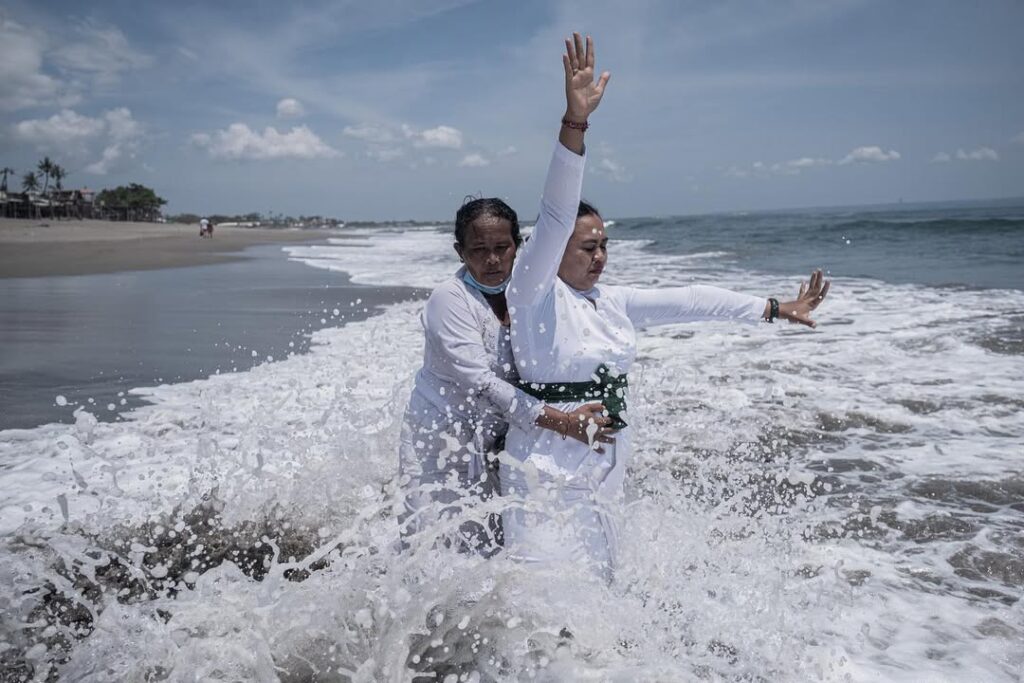
(Photo by : Agung Parameswara)
Why Is It Done at the Ocean?
In Balinese Hindu belief, the ocean is a sacred place filled with Tirta Amerta, or “the water of life”.
Unlike spring or temple water, seawater is believed to have the power to absorb and neutralize kotoran sekala-niskala—impurities both seen and unseen.
So, the beach becomes more than just a pretty background. It becomes a holy destination.
Once the procession reaches the water, priests perform rituals, sprinkle tirta (holy water), chant mantras, and lead purification prayers.
People also splash their faces, heads, and hands with seawater—symbolizing self-cleansing.

(Photo by : Agung Parameswara)
What Do the Offerings Mean?
Melasti isn’t complete without banten, or ceremonial offerings. These are elaborately arranged stacks of fruits, flowers, and symbolic items carried mostly by women, often balanced perfectly on their heads.
The offerings aren’t just decorative. Each one carries meaning. For example:
- Canang Sari: The basic daily offering, used here in great numbers to express gratitude and respect.
- Banten Pejati: A full offering representing sincerity, wholeness, and devotion.
- Banten Guru Piduka: Made to apologize to the gods for mistakes or missteps in rituals or behavior.
Together, these offerings form a bridge—connecting the physical world to the divine.
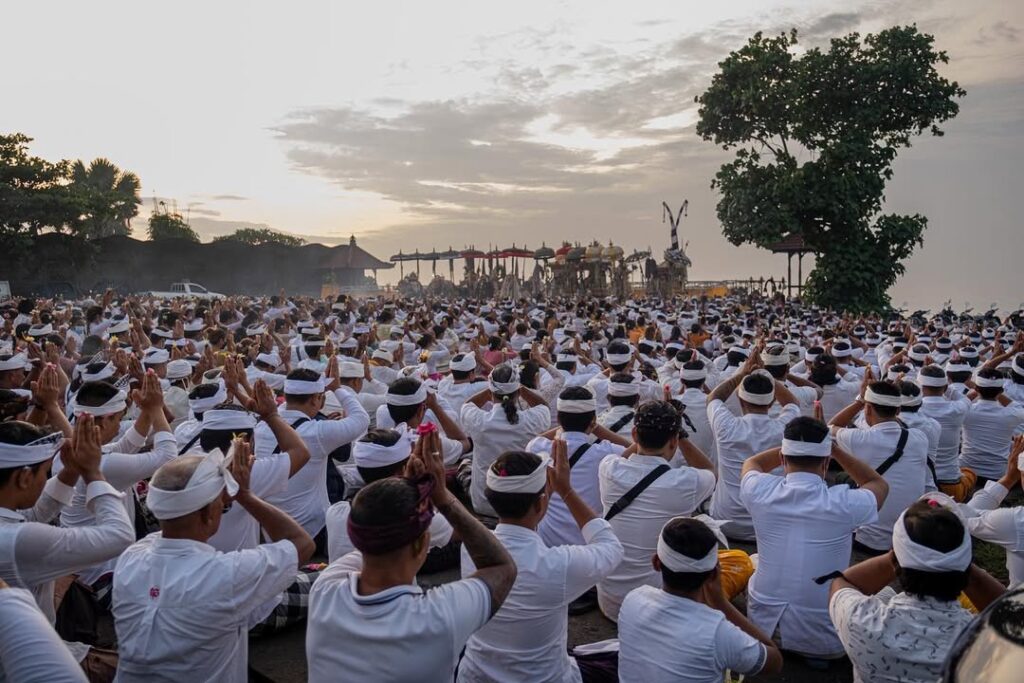
(Photo by : Agung Parameswara)
A Rare Blend of Sacred and Communal
One of the most interesting things about Melasti is how it blends solemnity with celebration. It’s incredibly sacred, yet deeply communal.
Villagers walk together in large groups, often wearing full traditional attire. Men wear white shirts, saput (waist cloth), and udeng (headcloth).
Women wear kebaya with bright sashes and carry offerings gracefully through the crowds. Gamelan music follows the group, echoing through the streets.
Even if you’re just observing, you can feel the energy shift as they move toward the ocean. It’s calm, but intense. Joyful, but sacred. Everyone has a role, and everyone knows what to do—even the kids.
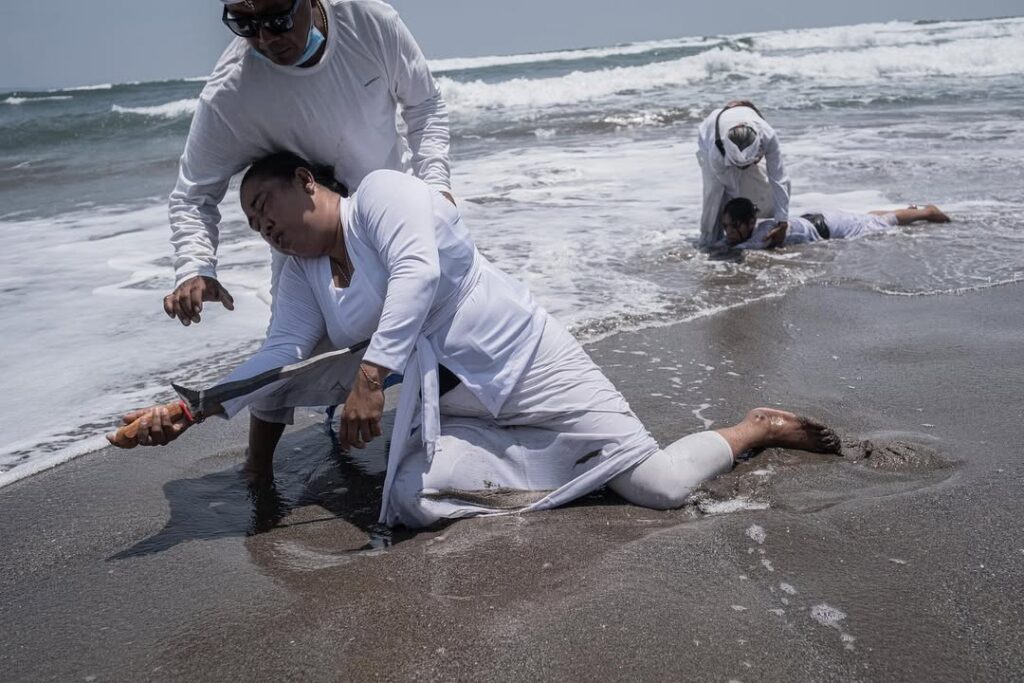
(Photo by : Agung Parameswara)
Historical and Spiritual Roots
Melasti isn’t a new tradition—it’s been practiced for centuries. It’s rooted in the Balinese Hindu Dharma, which blends elements of Hinduism from India with older animist traditions native to the archipelago.
The idea of purification before a new beginning exists in many cultures, but in Bali, it’s tied closely to the Saka calendar, which follows a lunar cycle.
Nyepi, which usually falls in March, marks the start of the new Saka year, and Melasti is part of the build-up to that reset.
In fact, in the ancient lontar (palm-leaf manuscripts), Melasti is described as a ritual that must be performed to restore rwa bhineda—the balance between opposites (good and evil, clean and dirty, order and chaos).
Without purification, that balance can’t be maintained, and harmony is lost.
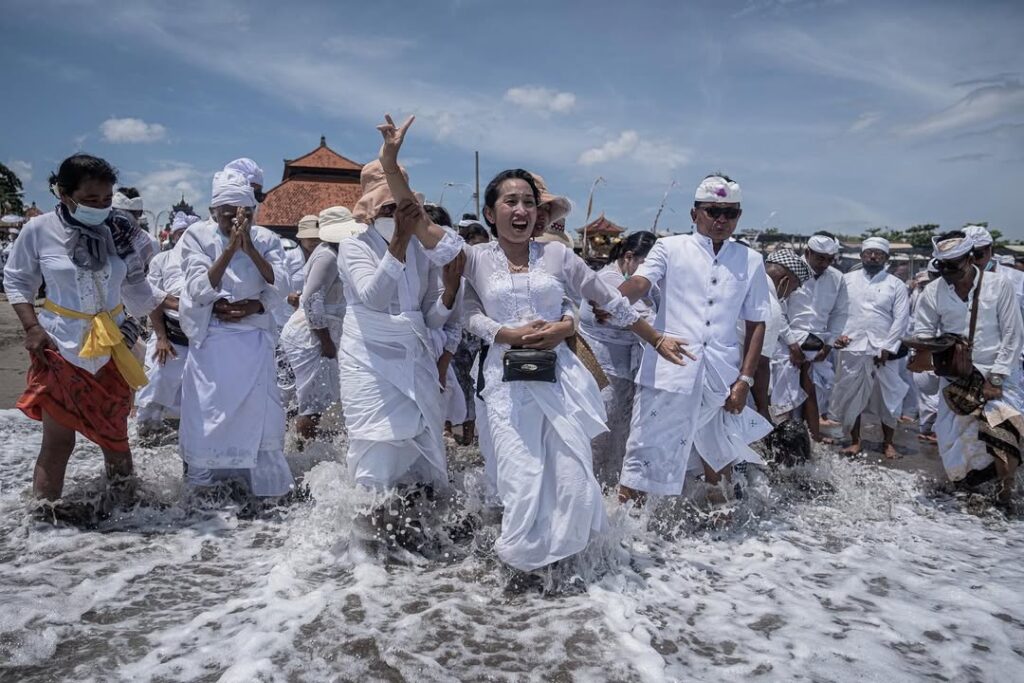
(Photo by : Agung Parameswara)
What Happens After Melasti?
Melasti is just the beginning. After the sea purification, there’s another ceremony called Tawur Kesanga, usually held in the village square.
This is when the community symbolically offers up all the negativity they’ve collected, and it’s where the famous Ogoh-Ogoh statues come into play—huge, demonic figures built by the youth to represent evil spirits.
After that comes Nyepi—a full day of silence, no lights, no electricity, no travel, and no activity. Even the airport closes. It’s meant for introspection and rest.
The contrast between Melasti’s vibrant procession and Nyepi’s total stillness makes the journey even more meaningful.
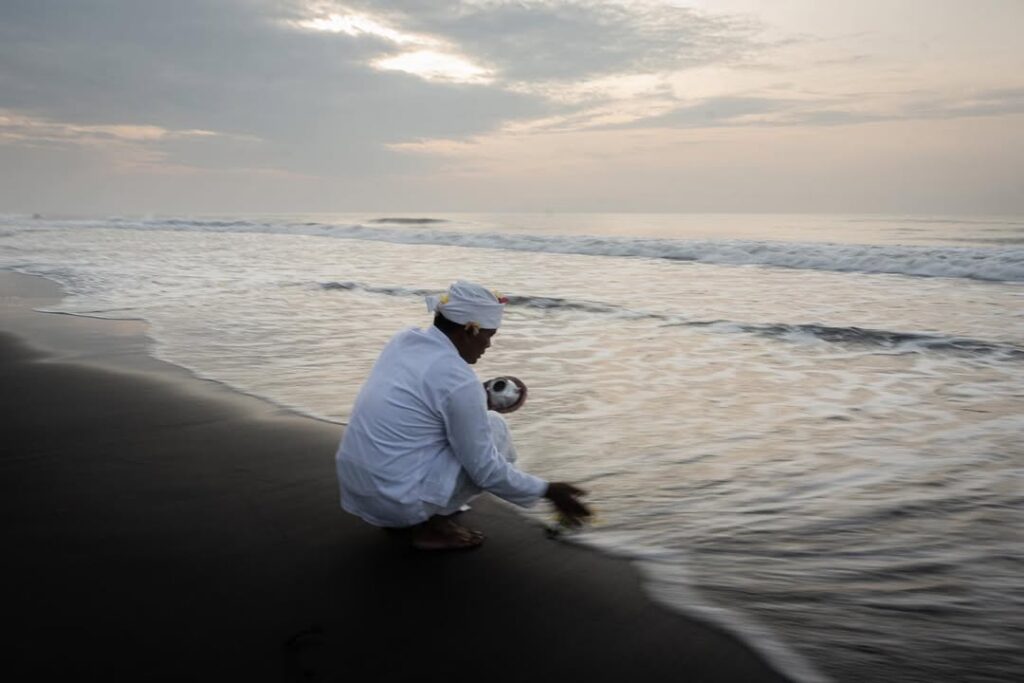
(Photo by : Agung Parameswara)
Tips for Visitors
If you find yourself in Bali during Melasti, it’s one of the most beautiful times to be on the island—but it’s also important to respect the sacredness of the moment.
- Dress modestly: If you’re visiting a temple or watching from nearby, wear a sarong and sash if possible.
- Keep your distance: Don’t interrupt the processions or step in front of people carrying sacred items.
- Don’t treat it like a show: This isn’t a performance for tourists—it’s a living, breathing act of devotion.
- Avoid drones and flashes: Especially when ceremonies are underway.
Most locals are happy to explain what’s happening if you ask politely. Just remember that you’re witnessing something deeply spiritual.

(Photo by : Satrio Ramadhan)
Melasti isn’t just about cleansing statues or throwing offerings into the sea. It’s about resetting your soul. It’s about preparing your whole being—physically, mentally, and spiritually—for a new beginning.
In a world that rarely pauses, Melasti is a reminder that sometimes, before silence, you need to listen. To your community, to your gods, and to the sea.

